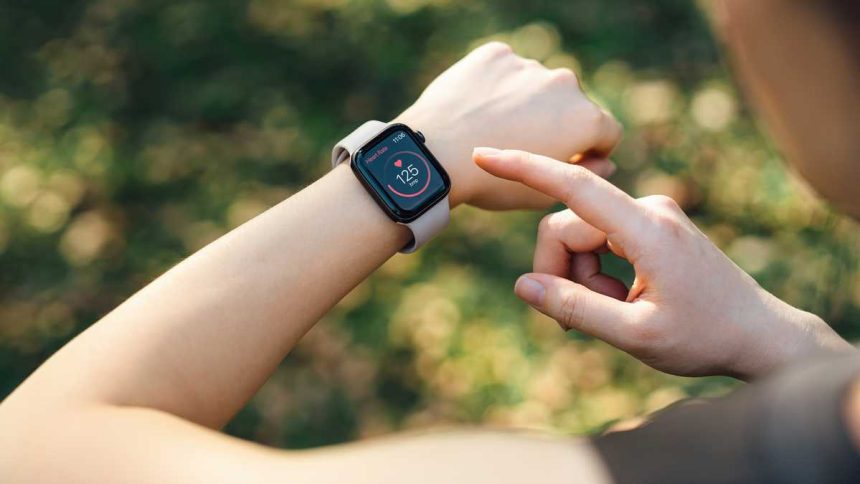Whether you’re a fitness novice or a seasoned enthusiast, the recommendation to use a heart rate monitor during exercise is a common one. This compact yet powerful device tracks your heart rate in real-time, measuring the beats per minute (BPM) as you engage in physical activity.
Various exercise machines such as treadmills, stationary bikes, rowers, and ellipticals come equipped with built-in heart rate monitors that detect the heart’s electrical signal through the palms of your hands. Additionally, there are external heart rate monitors like electrical chest straps that directly measure heart rate by reading the heart’s electrical signals.
Wearable heart rate monitors, such as the Apple Watch and Oura Ring, utilize LED light to detect changes in blood vessel size beneath the skin’s surface as your heart rate increases. Marvin Nixon, MS, NBC-HWC, CPT, a certified nutrition consultant and health and wellness coach, favors these wearable trackers for their comfort and accuracy, particularly during moderate or sustained exercise efforts.
While certain smartphone apps claim to measure heart rate, their accuracy may not match that of dedicated heart rate monitors. Regardless of the type of monitor chosen, wearing one during exercise offers numerous health and wellness benefits. Let’s explore the top five reasons why incorporating a heart rate monitor into your workout routine can be advantageous.
Reason 1: Enhance Workout Efficiency
Heart rate monitors track your heart rate in beats per minute, offering insights into the five heart rate zones: low intensity, moderate intensity, aerobic, vigorous intensity, and maximum intensity.
| Zone 1 | Zone 2 | Zone 3 | Zone 4 | Zone 5 | |
| Age | Low Intensity (57%-63%) | Moderate Intensity (64%-76%) | Aerobic Zone (70%-80%) | Vigorous Intensity (77%-95%) | Maximum Intensity (96%-100%) |
| 25 | 95-114 | 114-134 | 133-152 | 143-162 | 190 |
| 35 | 92-110 | 110-128 | 128-147 | 138-156 | 183 |
| 45 | 88-106 | 106-124 | 124-141 | 133-150 | 177 |
| 55 | 95-102 | 102-119 | 119-136 | 128-145 | 170 |
| 65 | 82-98 | 98-114 | 114-131 | 123-139 | 163 |
| 75 | 78-94 | 94-110 | 110-125 | 117-133 | 157 |
These zones, determined by your age, indicate the level of intensity you’re experiencing during exercise. For instance, a higher heart rate suggests increased effort as your heart pumps oxygen-rich blood to your muscles.
Understanding your current heart rate zone while exercising allows you to tailor your workouts accordingly, optimizing them to align with your fitness objectives. Marvin Nixon, an expert in health and wellness coaching, emphasizes the importance of training across various heart rate zones to improve metabolic flexibility, build strength, and facilitate proper recovery between sets.
Reason 2: Monitor and Enhance Fitness Progress
Heart rate monitoring provides insight into how efficiently your heart pumps blood and oxygen to your muscles during exercise. Tracking these metrics over time reveals improvements in your cardiovascular fitness and endurance levels.
According to Nixon, as you engage in consistent training, you’ll observe that your heart rate takes longer to reach higher levels during exercise. This indicates an enhanced endurance capacity and signifies progression in your fitness journey.
Furthermore, Nixon notes that as you maintain the same exercise regimen, your heart rate tends to stabilize at a more moderate level. This stabilization reflects improved fitness levels and suggests that your body has become accustomed to the physical demands of the activity.
Reason 3: Prevent Overexertion and Injury
Monitoring your heart rate during exercise helps prevent overexertion and potential injury. By understanding how hard your heart is working, you can avoid pushing yourself beyond healthy limits.
Nixon emphasizes the importance of avoiding excessive exertion, noting that unless you’re a professional athlete, there’s little reason to exercise at the highest intensity levels. Overexertion can lead to longer recovery times and may negatively impact future performance.
Tracking your heart rate enables you to adjust your exercise intensity for faster recovery and maintain a consistent workout routine. This is particularly crucial during high-intensity workouts or HIIT sessions, where pushing too hard can result in burnout and hinder performance in subsequent sessions.
Reason 4: Enhance Weight Loss and Calorie Burn
Heart rate monitors play a role in enhancing weight loss and optimizing calorie burn during exercise. These devices estimate calorie expenditure using a formula that considers various factors such as age, weight, gender, heart rate, exercise duration, and intensity level.
While the calorie estimation provided by heart rate monitors is not always perfectly accurate, it offers a helpful guideline. Typically, the formulas start with a base calorie burn of about 100 kCal per 10 minutes and adjust based on exercise intensity.
Nixon suggests that by monitoring your exercise intensity to ensure you’re in the optimal fat-burning zone, you can maximize the duration spent in a state of elevated fat burning. This means exercising at an intensity high enough to burn fat efficiently without surpassing the threshold where more glucose than fat is used as fuel.
Reason 5: Personalize Training Programs
Monitoring your heart rate allows you to identify your current heart rate zone, enabling you to customize your workouts to achieve specific fitness objectives. For instance, if your goal is to improve endurance or enhance your body’s capacity for sustained exercise, you’ll aim to spend the majority of your workout in the aerobic heart rate zone, typically between 70% and 80% of your maximum heart rate, as recommended by Nixon. Conversely, if you’re focusing on speed training, you’ll target more time in the anaerobic zone, which ranges from 80% to 90% of your maximum heart rate and involves energy production without significant oxygen use.
In addition to tailoring workouts, monitoring your heart rate provides real-time feedback on exercise intensity, helping prevent overtraining. Overtraining can lead to fatigue, diminished athletic performance, and even injury. By using a heart rate monitor to gauge exercise intensity, you can avoid these pitfalls and stay on track toward achieving your fitness goals.
Bottom Line
Heart rate monitors offer fundamental benefits that can enhance your workouts, safeguard against overtraining, and facilitate progress tracking to measure your exercise goals more effectively. Whether you’re just starting your fitness journey or have been exercising for a while, incorporating a heart rate monitor into your routine can be advantageous for everyone.










